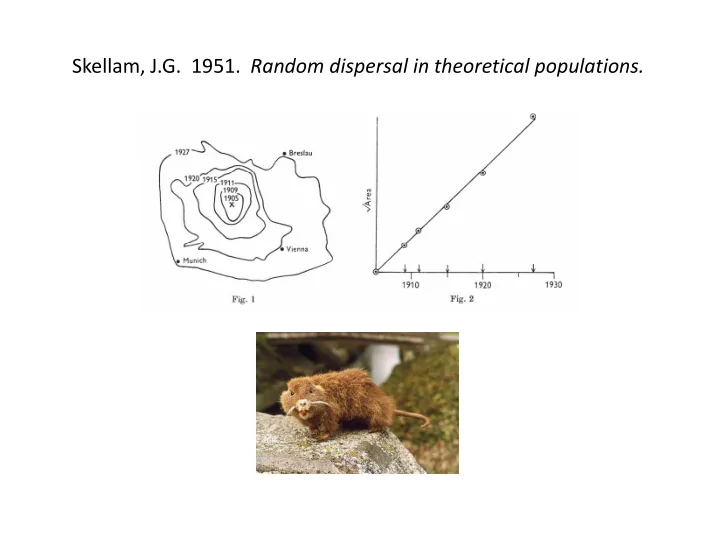

Skellam, J.G. 1951. Random dispersal in theoretical populations.
E.E. Holmes, 1993. Are diffusion models too simple? A comparison with telegraph models of invasion p g p f Motivation: Diffusion models possess weird (non ‐ biological) microscopic properties. (Ex: infintesimally small chance of infinitely fast movement.) Telegraph dispersal: : constant velocity : stochastic turning rate : stochastic turning rate
E.E. Holmes, 1993. Are diffusion models too simple? A comparison with telegraph models of invasion p g p f Invasion speeds predicted by reaction ‐ diffusion models vs. reaction ‐ telegraph models: c 1 tele r c c 1 1 diff diff 2
Stochastic dynamics of invasive Stochastic dynamics of invasive y spread spread Brett Melbourne & Alan Hastings U i University of California, Davis i f C lif i D i
Flour beetle: castaneum Tribolium 4 cm Experiment Experiment
4 cm Tunnel Hole Experiment Experiment
Lifecycle in laboratory Lifecycle in laboratory Discrete time (35 day cycle) 1) Adults lay eggs (24 hr) 1) Adults lay eggs (24 hr) Fences installed; adults removed 2) Larvae grow 2) Larvae grow Adults emerge (ca day 30) 3) Adults disperse (48 hr) Census after dispersal
Experiment Experiment 30 landscapes Constant Constant environment 13 generations 13 generations
Recommend
More recommend